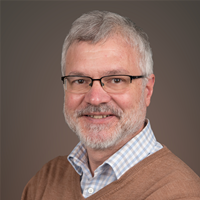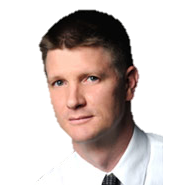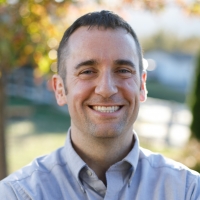Measurement Acceptance Criteria*
Standards, Principles, and Required Documentation
*A PDF version of this document can be downloaded here.
A goal of this Gen3CSP project is to establish a thermophysical property database of high temperature (700-1250 °C) (i) heat transfer media (HTMs) and (ii) containment materials (CMs). This database will be made public containing thermophysical properties collected using (a) our electrothermal immersion technique, (b) our modified photothermal technique, and (c) from third parties (i.e., literature and other Gen3CSP collaborators). This document outlines criteria for an “acceptable” measurement or dataset to be included in this database and the accompanying supporting information.
Acceptable Measurement Criteria: Thermophysical property (thermal diffusivity, thermal conductivity, and specific heat) measurements performed for the Gen3CSP program will meet the following criteria:
- Sufficient details to identify the material (e.g., composition, vendor’s product/catalog ID number, etc.),
- Nominal measurement value,
- Measurement conditions (e.g., temperature, N2/Ar environment, etc.),
- Uncertainty quantification individually reported with each measurement,
- Measurement uncertainty of less than 15% of the nominal value is preferred, but exceptions can be made for difficult/exotic materials.
- Monte-Carlo uncertainty is the preferred approach when using a multi-parameter thermal model; simplified quadrature uncertainty can be used when an analytical relation exists.
- Reference to appropriate measurement standard or supporting peer-reviewed publication detailing the measurement technique.
This data will be made available to the public with each measurement set that is curated in this thermophysical property database via a web interface hosted at Georgia Tech. Raw data of each measurement will be curated separately but will be made available for subsequent analysis upon request. Each dataset included in the database will be reviewed by senior personnel (i.e., the PI, Co-PI, Research Engineer/Scientist, Postdoc, etc.) to ensure that these criteria are met.
Notes:
- Our electrothermal immersion technique is a modification of the 3-omega technique that can be immersed in a high temperature fluid. This technique is currently under development (as of January 2019). This technique will be qualified by using known standards allowing for at most 10% variation from the accepted value. The technique methodology will be documented in a peer-reviewed publication.
- Our modified photothermal technique is a modification on the flash diffusivity technique. Specifically, this technique has been modified to use infrared optics to correct for collimator/aperture effects that become pronounced at high temperatures. This instrument was purchased from Netzsch (LFA 467 HT Hyperflash®) and modifications are underway. To measure the volumetric specific heat of bulk samples, we will use a modified DSC/TGA purchased from Netzsch (STA 449 F3 Jupiter®) with modification to the platinum furnace and sample holders specifically designed for more accurate specific heat measurements (and not phase transitions). The manufacturer’s specific heat uncertainty is claimed at 3.5%; this will be verified through testing known standards.
- Third party measurements from others within the Gen3CSP program and beyond will also be welcome, but we will insist upon the aforementioned criteria for inclusion in the database.
We would also like to thank Prof. David G. Cahill, Prof. Chris Dames, and Prof. Patrick Hopkins, who were kind enough to review the above criteria as our standard for acceptable measurements.

David G. Cahill
David Cahill is the Willett Professor of Engineering and Professor of Materials Science and Engineering at the University of Illinois at Urbana-Champaign. He joined the faculty of the Department of Materials Science and Engineering at the U. Illinois after earning his Ph.D. in condensed matter physics from Cornell University, and working as a postdoctoral research associate at the IBM Watson Research Center. His current research program focuses on developing a microscopic understanding of thermal transport at the nanoscale; extremes of low and high thermal conductivity in materials; the interactions between phonons, electrons, photons, and spin; and the kinetics and thermodynamics of aqueous and electrochemical interfaces with materials. He received the 2018 Innovation in Materials Characterization Award of the Materials Research Society (MRS); the 2015 Touloukian Award of the American Society of Mechanical Engineers; the Peter Mark Memorial Award of the American Vacuum Society (AVS); and is a fellow of the MRS, AVS, and APS (American Physical Society).

Chris Dames
Chris Dames received his Ph.D. in Mechanical Engineering from the MIT in 2006. His B.S. and M.S. are from UC Berkeley (1998, 2001). He was a faculty member at UC Riverside from 2006-2011 before joining UC Berkeley in 2011, and he has also worked as a research engineer for Solo Energy Corp. (1998-1999). His research interests emphasize fundamental studies of heat transfer and energy conversion at the nanoscale, using both theoretical and experimental methods. Some topics of current interest include graphene, nanocrystalline materials, mean free path distributions, thermoelectrics, biological systems, and highly anisotropic and nonlinear transport including thermal rectification. His research has been recognized with a DARPA Young Faculty Award (2009) and NSF CAREER award (2011).

Patrick E. Hopkins
Patrick Hopkins is a Professor in the Department of Mechanical and Aerospace Engineering at University of Virginia (U.Va.). He received his Ph.D. in Mechanical and Aerospace Engineering from the U.Va. in 2008, following a B.S. in Mechanical Engineering and a B.A. in Physics at U.Va. in 2004. He spent 3 years as a Harry S. Truman Postdoctoral Fellow at Sandia National Laboratories in Albuquerque, NM from 2008 – 2011. Hopkins began his faculty appointment at U.Va. in 12/2011 as an Assistant Professor, and was promoted to Associate Professor with tenure in 8/2015. Hopkins is a recipient of the AFOSR and ONR Young Investigator Awards, the ASME Bergles-Rohsenow Young Investigator Award in Heat Transfer, and the Presidential Early Career Award for Scientists and Engineers (PECASE).
About the Solar Energy Technologies Office
The U.S. Department of Energy Solar Energy Technologies Office supports early-stage research and development to improve the affordability, reliability, and performance of solar technologies on the grid. Learn more at energy.gov/solar-office
Acknowledgement
This work was funded in part or whole by the U.S. Department of Energy’s Office of Energy Efficiency and Renewable Energy (EERE) under the Solar Energy Technologies Office Award Number DE-EE0008371.
